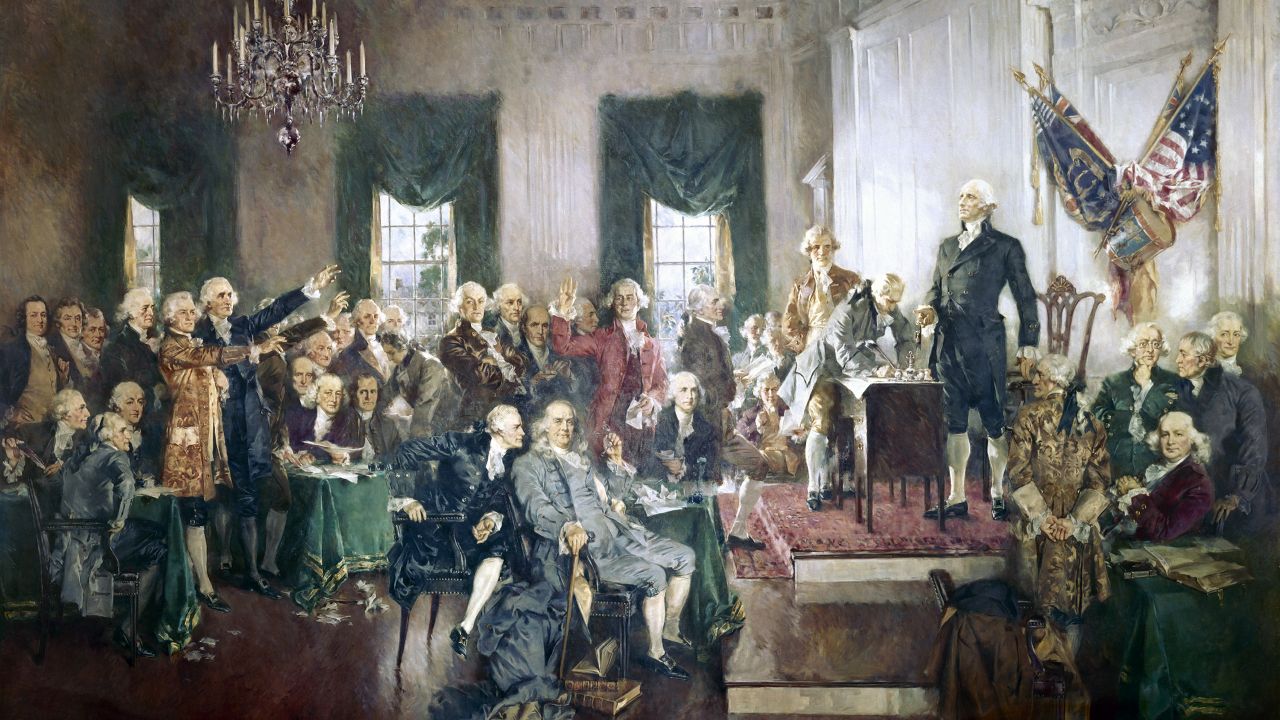
"The Signing of the Constitution of the United States," with George Washington, Benjamin Franklin, and Thomas Jefferson at the Constitutional Convention of 1787; oil painting on canvas by Howard Chandler Christy, 1940. (Photo by GraphicaArtis/Getty Images)
The Republican vote to acquit former President Trump wasn’t just a vote to avoid accountability. It was a vote to further enfeeble and obfuscate the Constitution.
In 1787, the delegates to the Constitutional Convention drafted the new constitution, hoping that they had clearly outlined the powers and limitations of the federal and state governments. But the framers of the Constitution often disagreed with each other on many substantial issues, especially the presidency. Vague language permitted framers to interpret the Constitution to their own liking and ensured a majority of the delegates signed the Constitution.
The last four years, and the second impeachment trial of Donald Trump in particular, have revealed that much of the Constitution remains an open question. Article I, Section 3 of the Constitution provides that “The Senate shall have the sole Power to try all Impeachments.” But the Constitution neither explicitly provides nor explicitly prohibits a trial after the completion of an administration—one of the many questions left unanswered.
There are historic examples that provide evidence in favor of the constitutionality of impeachment after an official departs office. In 1876, the House of Representatives impeached former Secretary of War William Belknap immediately after his resignation. The Senate voted that it retained its jurisdiction to hear the impeachment trial. Last week, House Managers referenced this precedent as grounds to proceed with the impeachment of Trump.
They also offered common-sense arguments in favor of impeachment. House Manager Jamie Raskin emphasized the precedent-setting nature of the proceedings. If the Senate rejected impeachment proceedings after a president left office, the senators would create a “January exception,” where presidents could commit high crimes and misdemeanors in their final weeks in office “without facing any constitutional accountability.”
Accordingly, the Senate voted 56-44 to move forward with the impeachment proceedings. This vote confirmed the previous vote the Senate had taken in 1876. It also established additional precedent that the Senate has the power to oversee the impeachment proceedings for former presidents.
Yet, many of the 43 senators who voted to acquit former President Trump said the proceedings were unconstitutional—in direct contradiction to the decision of their own body. Senate Minority Leader Mitch McConnell was one of the 43 senators who voted to acquit on constitutional grounds. Of course, it was McConnell who ensured that the trial didn’t begin until after Trump left office. Even more perplexing, after voting to acquit, McConnell then gave a speech condemning Trump for his role in inciting and supporting the insurrection. McConnell and the other 42 Republican senators made choices to maximize their political authority. But in reality they made a choice to further weaken Article II.
The results of the impeachment trial should have added additional clarity to Article II of the Constitution. Instead, it remains unclear how to hold a president accountable in the final weeks of their term. It remains unclear what actions a president can take with impunity. The senators’ votes also emphasize that multiple interpretations of the Constitution remain—at least until the Senate is willing to follow its own precedent. The president’s constitution remains an open question.



